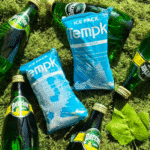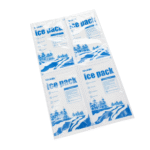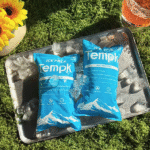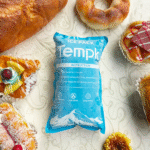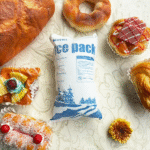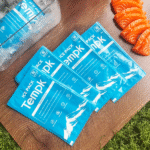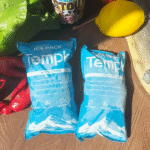Dans un secteur de la logistique de la chaîne du froid en pleine évolution, la neige carbonique est depuis longtemps la norme pour maintenir des températures inférieures à zéro. Cependant, avec des problèmes de sécurité et un impact environnemental croissants, the industry is shifting toward dry ice substitute packs. Ces solutions innovantes offrent une sécurité accrue, plus vert, et des méthodes de refroidissement plus rentables, offrir une alternative viable pour le transport de marchandises périssables. Dans cet article, nous verrons pourquoi les packs de remplacement de glace carbonique sont l'avenir de la logistique de la chaîne du froid.
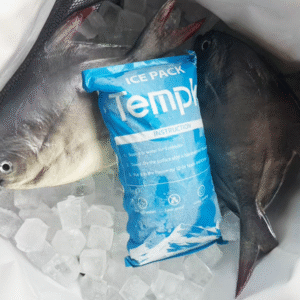
Que sont les packs de remplacement de glace carbonique et comment fonctionnent-ils?
Les packs de remplacement de glace carbonique sont des agents de refroidissement innovants conçus pour remplacer la glace carbonique traditionnelle dans l'industrie de la chaîne du froid.. Ces packs utilisent des matériaux comme des polymères super absorbants (SÈVE) ou matériaux à changement de phase (PCMS) pour absorber et libérer de la chaleur grâce à des changements de phase ou des systèmes à base de gel, fournir un refroidissement fiable sans les risques de sécurité liés à la neige carbonique.
Contrairement à la glace sèche, qui se sublime en gaz carbonique, les packs de remplacement de glace carbonique restent solides et peuvent être manipulés en toute sécurité. They work by absorbing water, freezing into a gel-like substance, and slowly releasing the cold during transportation, ensuring a consistent temperature.
Key Benefits of Dry Ice Substitute Packs:
-
Manipulation plus sûre: These packs do not release harmful gases and reduce risks like frostbite.
-
Respectueux de l'environnement: Fabriqué à partir de matériaux non toxiques, they offer a greener solution to dry ice.
-
Économique: With reusable options, these packs help cut costs in the long run.
How Do Dry Ice Substitute Packs Compare to Traditional Dry Ice?
Dry ice has been the go-to solution for cold chain logistics, but it comes with risks, including potential frostbite, asphyxiation from CO₂ buildup, and environmental concerns. Here’s how dry ice substitute packs stack up:
| Fonctionnalité | Glace sèche | Packs de substitut de glace sec |
|---|---|---|
| Plage de température | -78.5°C | -20°C to -40°C |
| Durée de refroidissement | Short lifespan (12–24 hrs) | Longue durée (jusqu'à 48 HRS) |
| Sécurité | High risk (gelure, Gaz coag) | Low risk (non toxique, no gases) |
| Impact environnemental | Haut (CO₂ EMISSIONS) | Faible (Matériaux écologiques) |
| Réutilisabilité | À usage unique | Réutilisable |
| Rentabilité | Faible (à usage unique) | Haut (réutilisable, lower total costs) |
Why Are Dry Ice Substitute Packs Safer?
Traditional dry ice carries several significant safety hazards. It sublimes into CO₂ gas, qui peut déplacer l'oxygène dans les espaces confinés, posing an asphyxiation risk. En plus, handling dry ice can lead to frostbite or severe burns without proper safety measures.
Dry ice substitute packs eliminate these risks. Ils sont non toxiques, and since they don’t release gases, there is no need for specialized ventilation or safety training. The risk of frostbite or injury is significantly reduced, making them safer for both workers and consumers.
Safety Advantages:
-
No harmful gas emissions: Dry ice packs do not release CO₂ gas.
-
No specialized equipment: These packs don’t require hazardous materials handling.
-
Manipulation sûre: The absence of extreme temperatures ensures no risk of burns or frostbite.
How Do Dry Ice Substitute Packs Compare to Other Cooling Methods?
Other cooling methods include gel packs, packs de glace, and liquid nitrogen, but dry ice substitute packs often outperform them in many areas.
| Méthode de refroidissement | Contrôle de la température | Durée | Sécurité | Coût |
|---|---|---|---|---|
| Glace sèche | Extrêmement froid (-78.5°C) | Court | Dangereux, nécessite une manipulation particulière | Faible (à usage unique) |
| Packs de gel | Froid modéré (~0°C to -20°C) | Moyen | Sûr, réutilisable, non toxique | Modéré |
| Azote liquide | Ultra-froid (-196°C) | Very short | Dangereux, nécessite une manipulation particulière | Haut |
| Packs de substitut de glace sec | Froid modéré (~-20°C to -40°C) | Longue durée (12–48 hrs) | Sûr, réutilisable, non toxique | Haut (réutilisable) |
Dry ice substitute packs offer a balanced solution—providing reliable cooling, durée plus longue, and a safer, greener alternative compared to other methods.
The Growing Demand for Dry Ice Substitute Packs in Cold Chain Logistics
As industries like pharmaceuticals, nourriture, and biotechnology demand higher safety and sustainability standards, the popularity of dry ice substitute packs continues to rise. L'industrie pharmaceutique, en particulier, needs precise temperature control for vaccines and biologics. Dry ice substitute packs offer an efficient, safer solution for transporting these sensitive products.
Industries Benefiting from Dry Ice Substitute Packs:
-
Médicaments: Vaccins, produits sanguins, and other temperature-sensitive medicines require consistent, regulated cooling.
-
Nourriture & Boisson: Perishable goods like frozen food, viande, and dairy need reliable cooling to maintain quality during transport.
-
Biotechnologie: Biological samples and lab research materials benefit from stable temperature control, ensuring their integrity during transit.
Trends and Innovations in Dry Ice Alternatives for 2025
Dans 2025, advancements in material science are leading to even better performing dry ice substitute packs. Manufacturers are focusing on enhancing cooling performance, improving materials for longer cooling durations, and increasing sustainability.
Derniers développements:
-
Enhanced materials: New SAP formulations that offer longer cooling times and better heat retention.
-
Emballage intelligent: Integration of IoT temperature monitoring to ensure precise control during transportation.
-
Solutions durables: Biodegradable and recyclable outer films to reduce environmental impact.
Frequently Asked Questions About Dry Ice Substitute Packs
Q1: Are dry ice substitute packs reusable?
Oui, dry ice substitute packs are designed to be reused multiple times, making them a cost-effective and eco-friendly option for cold chain logistics.
Q2: How do I choose the right dry ice substitute pack for my shipment?
Select the appropriate pack based on factors such as the required temperature range, durée du transit, and the type of goods being shipped. Researching phase-change materials and specifications will help guide your decision.
Q3: Are dry ice substitute packs more expensive than dry ice?
While dry ice substitute packs may have a higher initial cost, their reusability and environmental benefits make them more cost-effective over time, especially for frequent use.
Conclusion: The Future of Cold Chain Logistics with Dry Ice Substitute Packs
Dry ice substitute packs offer a safer, plus durable, and cost-effective alternative to traditional dry ice in cold chain logistics. As industries continue to prioritize environmental sustainability, sécurité, and cost-efficiency, the adoption of these packs is set to increase in 2025 et au-delà.
Informations exploitables:
-
Switch to dry ice substitute packs: Transitioning from dry ice can improve safety and reduce environmental impact.
-
Évaluez vos besoins en chaîne froide: Choose the right pack based on your products’ temperature requirements.
-
Stay up-to-date with new technologies: Incorporate innovations in cooling materials and monitoring systems to further optimize your logistics.
À propos du tempk
Tempk est l'un des principaux fournisseurs de solutions à température contrôlée, offering high-performance dry ice substitute packs tailored for the cold chain logistics industry. With a commitment to safety, durabilité, et l'innovation, Tempk’s products ensure reliable and eco-friendly transportation for temperature-sensitive goods.
Explore how Tempk can enhance your cold chain operations. Contact us for expert advice and custom solutions today!
















